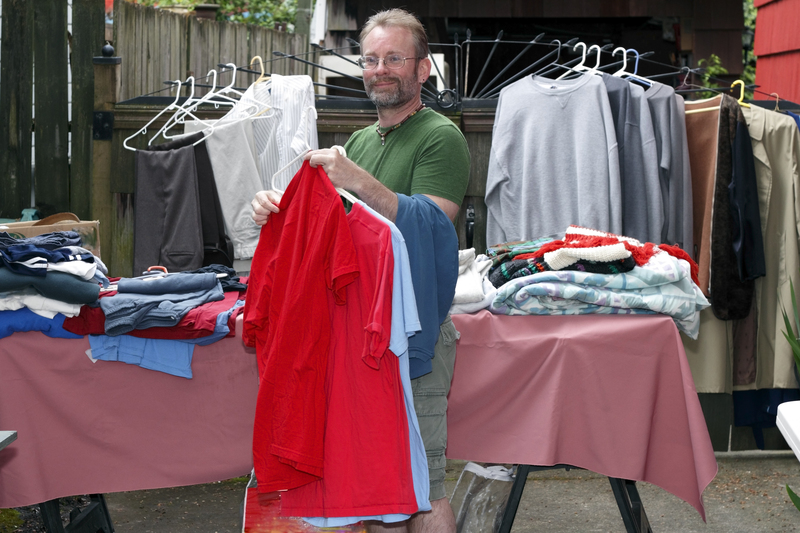Safeguarding the Environment While Getting Rid of PPE Waste
The pandemic accelerated the use of Personal Protective Equipment (PPE) worldwide, leading to an unprecedented surge in waste. While PPE such as masks, gloves, gowns, and face shields have become synonymous with public health and safety, their improper disposal poses significant environmental risks. Safeguarding the environment while getting rid of PPE waste is essential to ensure long-term ecological health and public wellbeing. This comprehensive guide explores sustainable PPE disposal methods, innovative recycling technologies, and actionable steps you can take to help protect the planet.
Understanding PPE Waste and Its Challenges
What Is PPE Waste?
Personal Protective Equipment waste comprises used or discarded items like masks, gloves, disposable gowns, shoe covers, and shields. During pandemics or other health emergencies, the volume of PPE waste multiplies exponentially, overwhelming conventional waste management systems.
Environmental Impacts of Improper PPE Disposal
- Non-biodegradable Materials: Most PPE is made from polyolefins such as polypropylene and polyethylene, which persist in the environment for hundreds of years.
- Plastic Pollution: Improperly disposed PPE contributes to the growing global plastic pollution crisis, affecting terrestrial and marine ecosystems.
- Toxicity and Microplastics: As PPE materials break down, they release microplastics and potentially toxic additives into the environment, infiltrating food chains and water supplies.
- Public Health Risks: Infectious waste threatens public health, spreading disease and endangering waste management personnel.

Best Practices for Safeguarding the Environment While Getting Rid of PPE Waste
To minimize the environmental impact, eco-friendly disposal of PPE waste demands an integrated approach. Adopting responsible habits, using innovative solutions, and influencing policy are fundamental.
1. Reduce, Reuse, and Rethink PPE Usage
- Opt for Reusable PPE: Whenever possible, choose washable cloth masks and reusable face shields over disposable options.
- Practice Responsible Consumption: Only use PPE when absolutely necessary to curb overconsumption and reduce resultant waste.
- Research Product Sustainability: Look for brands offering PPE made from biodegradable or recycled materials.
2. Proper PPE Waste Collection and Segregation
Proper segregation is the backbone of sustainable PPE waste management. It prevents cross-contamination and facilitates recycling or safe disposal. The following measures are essential:
- Dedicated Bins: Designate color-coded bins specifically for PPE waste in homes, hospitals, offices, and public spaces.
- Double Bagging: In healthcare settings, double-bag PPE waste to reduce leakage and exposure risks during transportation.
- Clear Labeling: Label bins and bags with hazard symbols and handling instructions.
3. Adopt Safe Collection and Handling Practices
- Ensure that PPE waste is always handled by individuals wearing gloves and masks to minimize exposure to contaminants.
- Provide clear instructions to households and businesses about correct PPE disposal protocols.
- Sanitize storage areas and equipment regularly to prevent the spread of infections.
Eco-Friendly Disposal Methods for PPE Waste
4. Incineration with Pollution Control
While incineration is a common method for hazardous medical waste, traditional incinerators can release dioxins and furans if not managed properly. Modern incineration should involve high-temperature furnaces with advanced filtration systems to minimize harmful emissions. This helps ensure safe PPE waste disposal without compromising air quality.
5. Autoclaving and Sterilization
Autoclaving uses high-pressure saturated steam at elevated temperatures to sterilize infectious waste. Afterward, the disinfected PPE can be safely landfilled or, for certain plastics, passed on for recycling. This method is especially effective in hospitals and large institutions for sustainable PPE waste management.
6. Mechanical and Chemical Recycling
- Mechanical Recycling: Certain PPE components, such as hard plastic face shields, can be mechanically processed into plastic flakes and reused for manufacturing purpose.
- Chemical Recycling: Advanced facilities can chemically break down polymers in PPE into basic monomers, which can then be turned into new plastics or fuels--a promising route for the sustainable management of PPE plastic waste.
7. Biodegradable Alternatives and Composting
As eco-conscious innovations gain traction, manufacturers are developing PPE products made from biodegradable materials like polylactic acid (PLA), natural rubber, or cellulose. These alternatives can reduce the long-term burden of waste on landfills and, in some cases, may be composted under controlled conditions.
The Role of Recycling in Responsible PPE Waste Disposal
PPE recycling remains a challenge due to the risk of infection and the diverse mix of materials used. However, special processes and pilot projects are demonstrating a way forward for large-scale, eco-friendly PPE waste disposal.
Pioneering PPE Recycling Initiatives
-
TerraCycle's PPE Recycling Program:
TerraCycle partners with companies and healthcare organizations to collect used masks, gloves, and other items. These are then sanitized, shredded, and transformed into composite materials for use in construction or as park benches. -
Hospital-Led Collection Systems:
Some hospitals are piloting mask-specific bins to collect used surgical masks and ship them to specialized recycling centers for processing.
Innovative Technologies for PPE Waste Management
- Hydrothermal Processing: Advanced reactors use water at high pressure and temperature to break PPE down into fuel or basic chemicals, dramatically reducing environmental harm.
- Plasma Pyrolysis: High-energy plasma breaks organic waste into simpler molecules, rendering hazardous waste safe and even generating syngas for energy.
- 3D Printing Filament: Recycled PPE plastics can be converted into filament for 3D printing, contributing to a circular economy.
The Role of Policy, Guidelines, and Public Education
Government Regulations and Industry Standards
Governments play a pivotal role in safeguarding the environment from PPE waste through clear regulations, incentives, and monitoring mechanisms.
- Strict Segregation Laws: Enforcement of policies requiring the separation of medical and infectious waste streams is vital.
- Support for Recycling Ventures: Grants and tax incentives can help scale up innovative recycling initiatives for PPE waste.
- Producer Responsibility: Manufacturers should be obligated to design eco-friendly products and take part in their end-of-life management.
Public Education and Community Engagement
- Awareness Campaigns: Governments, NGOs, and community groups must run awareness drives on how to safely dispose of and recycle PPE.
- Accessible Infrastructure: Local municipalities can provide dedicated PPE disposal bins in public areas, transport hubs, and shopping centers.
- Engaging the Youth: Schools and universities can integrate responsible PPE waste disposal practices into curricula and projects.
Action Plan: What Individuals and Organizations Can Do
-
Individuals:
- Use reusable masks when possible and only rely on disposables when mandated.
- Dispose of PPE in separate, closed bins, never littering in public areas or nature.
- Educate family and friends about the environmental impact of PPE waste mismanagement.
-
Businesses and Institutions:
- Install and maintain PPE-specific collection points in workplaces and public venues.
- Partner with licensed waste handlers or recycling initiatives to ensure safe processing of collected PPE.
- Favor procurement of eco-friendly, biodegradable, or recyclable PPE products for employees and visitors.
-
Healthcare Facilities:
- Strictly follow medical waste management protocols for infectious PPE materials.
- Train staff regularly in safe handling, segregation, and reporting of PPE waste streams.
- Support research and adoption of next-generation sterilization and recycling technologies.

Challenges and the Road Ahead
Barriers to Effective PPE Waste Management
- Economic Costs: Advanced recycling and safe incineration technology entail significant investment.
- Lack of Infrastructure: Many regions face gaps in specialized bins, collection, and handling systems for PPE waste.
- Limited Public Awareness: There is often confusion about the environmental impacts and safe disposal methods for PPE.
However, as sustainable innovations evolve and public interest in environmental stewardship grows, solutions for PPE waste disposal that prioritize ecosystem health are within reach.
Conclusion: A Shared Responsibility for a Cleaner Future
Safeguarding the environment while getting rid of PPE waste is not just a governmental or industrial task--it's a community-wide responsibility. By adopting conscientious habits, supporting innovative recycling, and advocating for robust policies, every stakeholder can help minimize the negative impact of PPE waste. Choose reusable options, dispose of single-use products responsibly, and stay informed about new advances in sustainable PPE management.
Together, we can ensure that today's protective measures do not become tomorrow's environmental hazards. Protect yourself, protect others, and protect the planet--one responsible act at a time.
